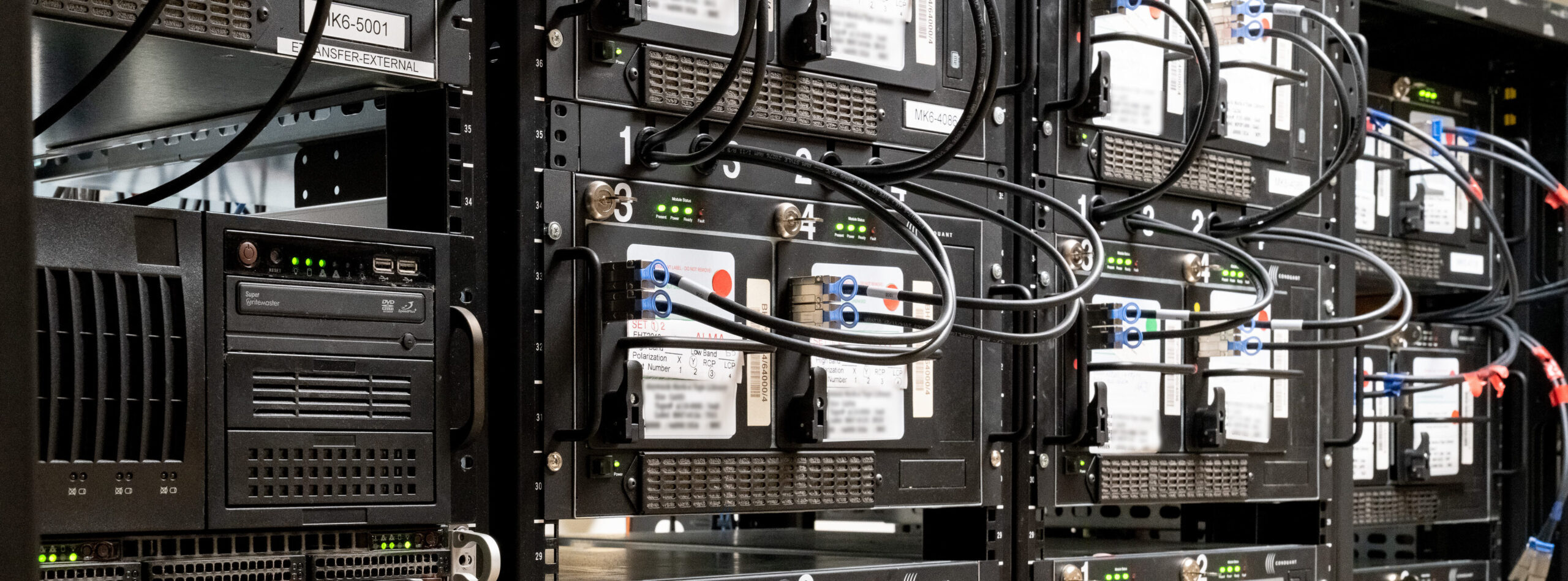
Mark 6 VLBI Data Recording System
The Mark 6 system, developed by Haystack Observatory, is a 16 Gbps next-generation disk-based VLBI data recording system based on high-performance commercial off-the-shelf (COTS) hardware and open-source software.
See also the Haystack Mark 6 Memo Series.
Mark 6 system characteristics:
- Four 10GigE input ports
- 16Gbps sustained record capability
- Supports up to four 8-disk modules for recording/playback
- Based on inexpensive high-performance COTS hardware
- Easily upgradeable hardware on Moore’s Law curve
- Linux OS (Debian Squeeze 6.0.3 and CentOS 7)
- Supports all common VLBI data formats
- Haystack-supported fully open-source software (C and Python)—see below
- VSI-S and XML command set support
- Scatter/gather file system to manage slow and/or failed disks
- Playback support on DiFX correlator for VDIF and Mark 5B data formats
- Smooth transition from Mark 5
- Preserve as much investment in existing Mark 5 systems as possible
- Existing Mark 5 SATA disk modules easily upgradeable to Mark 6
- Extensive stress testing in real-world operational environment
Mark 6 availability:
- Purchase full Mark 6 16Gbps system from Conduant Corp
- SSD OS disk available as option
- Upgrade your existing Mark 5 system to Mark 6
- Purchase Mark 6 disk modules (with or without disks)
- Upgrade existing Mark 5 SATA modules with upgrade kit from Conduant
- Contact greg@conduant.com for quotes
Coming in near future:
- Playback as standard Linux files using FUSE interface
- e-VLBI data-transfer support
In order to preserve as much investment as possible in existing Mark 5 systems and disk modules, Haystack Observatory is collaborating with Conduant Corporation in the design of the Mark 6 chassis and modules; all software has been developed by Haystack Observatory. Existing Mark 5 SATA modules are upgradeable to Mark 6 compatibility with an upgrade kit consisting of a new module backplane with a new high-reliability power connector at the rear and a new front panel with connections for two SAS2 data cables. and front panel; Mark 6 systems use the same bare chassis as Mark 5, and existing Mark 5 chassis are upgradeable to Mark 6 compatibility by replacing all electronic components.
Prototype Mark 6 systems are routinely in use for VGOS development work using the Westford Observatory and NASA/GGAO Observatory.
Haystack Observatory also gratefully acknowledges the continuing support of the NASA/GSFC High-End Network Computing Group for consultation on high-performance COTS hardware that have greatly helped in the development of Mark 6.
Mark 6 documentation
- Mark 6 release notes
- Mark 6 user’s manual
- Getting started with your Mark 6
- Mark 6 command set (Rev 1.0)
- Mark 6 usage examples
- Mark 6 usage at a DiFX correlator
- Mark 6 utilities
Mark 6 software